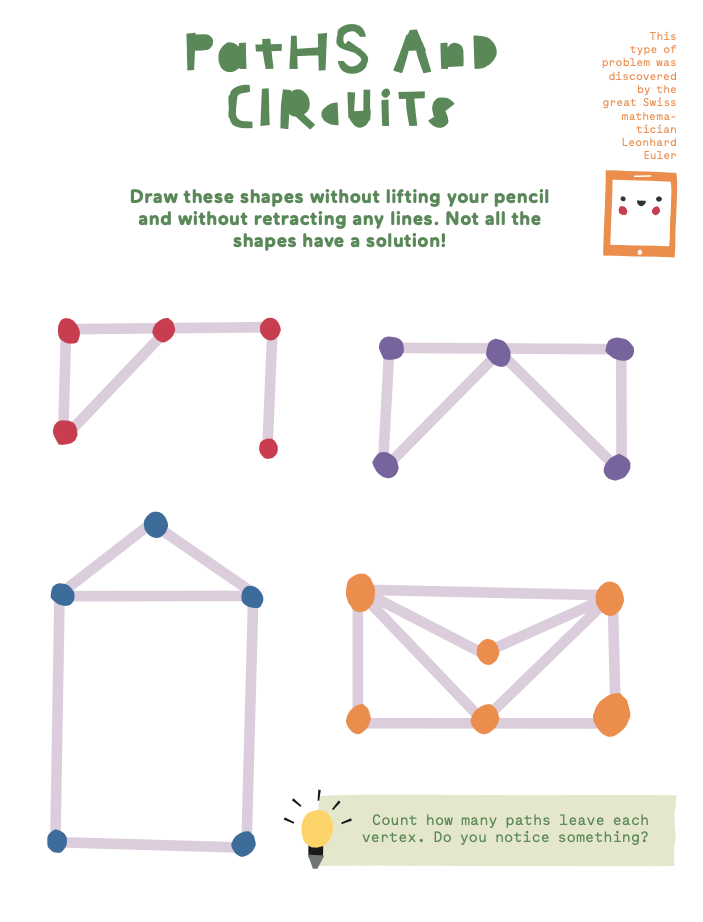No. 07 — Math, meet Computers 🗄️ Languages of Logic 🧮 Exploding Dots
From Minds to Hands
My name is Linda. I write a bi-weekly newsletter about computer science, childhood and culture - and there are 9692 of you listening. If you enjoy this issue, please share it with anyone you think may find it useful.
Often when we talk about math, we talk about discipline, rigour, analytical skills and avoidance of making mistakes. Contemplation is time wasted and there is only one way to solve problems. Children hear these messages loud.
Together with EduCaixa we chose three areas of mathematics (arithmetics, geometry and puzzles) and created a suite of activities and videos that connect them to the existing computer science curriculum of Hello Ruby.
We wanted to explore a more playful side of mathematics. I truly believe computers can help with math education. Programming can be a pathway to being able to play with math, interact with it and feel it for students who wouldn’t otherwise find the joy in it. A lot of the activities are tactile and try to connect the abstract ideas of math and computer science from our minds to our hands. How many ways can you fold a paper in half? How big a number can you count with five fingers?
Teaching computer science generally amounts to explaining something that most people don’t understand in terms that they do. The goal was to make something so friendly that anyone would feel welcome. Often computer science education feels like an alien reading a dictionary. Instead of a dictionary, we wanted to create a door.
The curriculum is designed so that there is a lot of room for teachers to reflect on their own classroom, set their own objectives and direct their own learning. I advise teachers to be gentle with themselves. Learning a new skill is always demanding, but it can be also an experience of empathy towards the students who are struggling with the exact same sense of frustration.
The mathematical part of the series has been done in collaboration with La Caixa Foundation and in the spirit of the Finnish educational principles of play, open-ended exploration and autonomy of teachers with their own classroom.
There were a lot of pedagogical ideas used in these videos: the semantic waves mentioned before, ADEPT-method, conceptions of mathematical and computational thinking cycles and analysis of remote math learning. (I warmly recommend the Espresso series from Cambridge, a joy to read!)
The series will continue to grow, hand in hand with international initiatives, such as Toni Beardon’s AIMSSEC, James Tanton’s Global Math Project, and experts in math dissemination like Fernando Blasco, Eulàlia Tramuns, Belén Garrido and others. A big thank you for Marta Garcia for fighting this project into existence and being a joy to work with!
Linked List
In computer science, a linked list is a linear collection of data elements whose order is not given by their physical placement in memory. But here it is a selection of things I’ve been reading lately.
I read many wonderful essays on math, that made me want to grab my math books and study again. Joel Hamkin’s posts on number sense, Seymour Papert’s Gears of My Childhood and Teaching kids math with computers by Stephen Wolfram among them.
I LOVED the Exploding Dots activities and videos and want to highlight them here too. Exploring number systems, different bases has never been this enjoyable.
There was surprisingly little research on the intersection of computational thinking and math, so any teachers/researchers in the audience, lots to do. I found this idea board on Computational Thinking and Math Research and also enjoyed this graph.
The classroom
Hit reply and answer me:
What early math experiences did you have that shaped how you see the discipline?
What kind of connection would you make between early math and computer science? How do abstraction, algorithmic thinking, decomposition or debugging fit into arithmetic practice? What kind of Venn diagram would you make of CT and Math?
What are your favourite puzzles and riddles?




